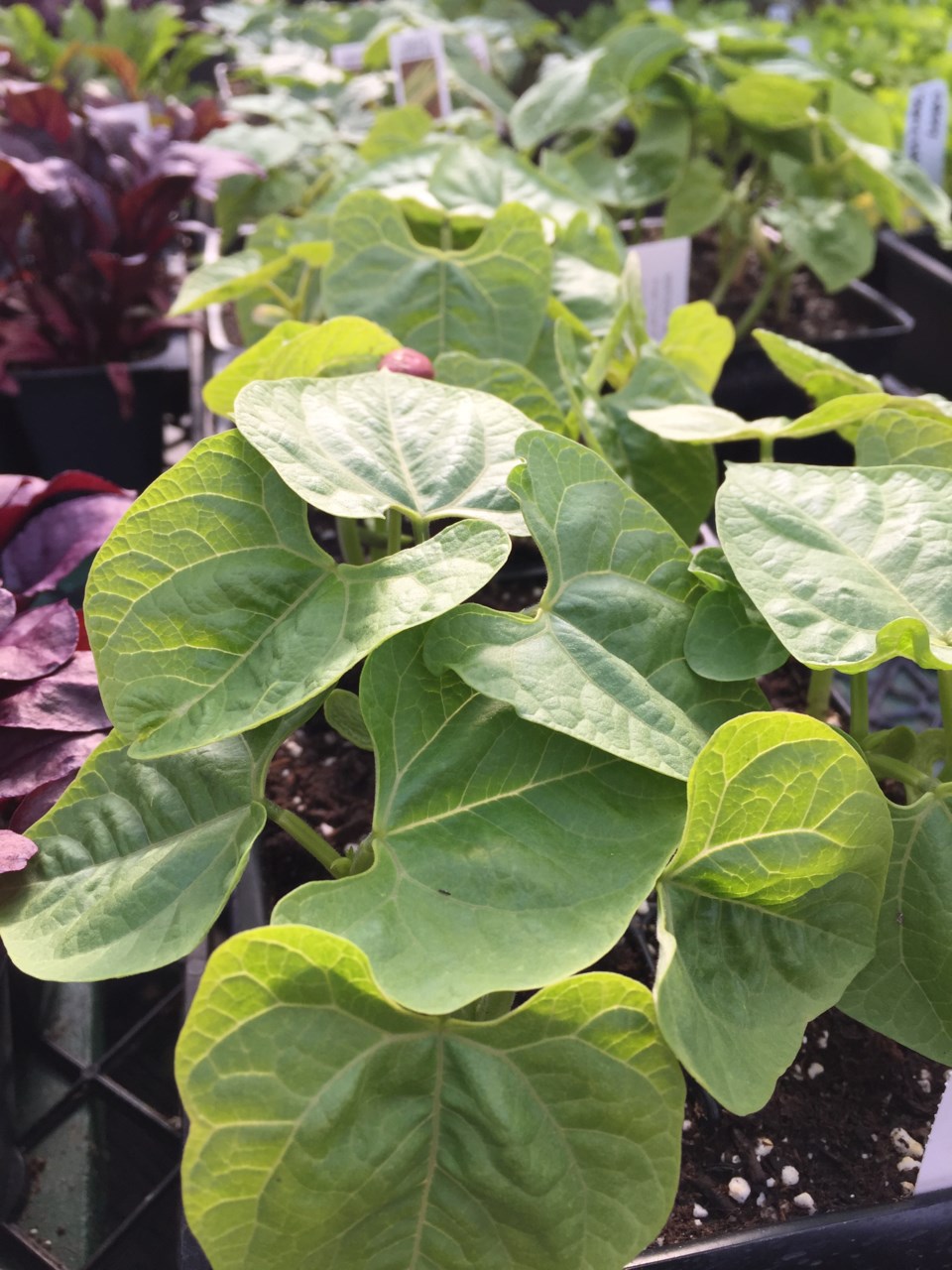Beans are one of the really healthy veggies, containing vitamins A, B and C, calcium, phosphorous, iron and lots of fiber, and they have only 31 calories per cup.
Not only that but amino acids and folic acid are also released as we digest them, helping in the development of red blood cells, the nervous system and digestion.
There are three types of beans: the snap types (the green and yellow varieties we all grow); green shelling beans (like broad beans); and the dry shell varieties (like the kidney types).
Most popular, of course, are the snap types, both bush and pole.
This, however, has not always been the case. For centuries, snap beans (referring to the snapping sound they make when broken) were not that well liked because the seam along the pod was rather tough, hence the name "string" bean. We have to thank Calvin Keeny, a New Yorker, whose breeding efforts resulted in the first really tasty and tender "stringless" bean — Burpee’s "Stringless Green Pod." Introduced in 1898, this bean helped Keeny become known as "The Father of the Stringless Bean." What a title!
The "Tender Green" variety, which we still see on racks today, was introduced in 1925. It wasn’t until 1962 that the fabulous "Bush Blue Lake" was developed. It is still one of the top varieties today and is both flavourful and tender.
Good pole beans arrived even earlier with the introduction of "Kentucky Wonder" in 1877 by the Ferry-Morse Seed Company. A cross between "Kentucky Wonder" and "Blue Lake" resulted in a 1991 All American Selection, "Kentucky Blue," one of the best pole varieties today.
Beans, by the way, are not hybrids. They are produced as open pollinated crops in northwest U.S. and southwest Canada. All beans are legumes, like peas, and fix nitrogen in the soil as they grow, making them an important nutrient crop.
Now that beans have earned the recognition they deserve, we need to be a little more creative in how we grow them.
They make wonderful container plants in limited space gardens but be innovative. You need a pot the size of a traditional half barrel. Make an eight-foot teepee with three to five bamboo canes, plant the seeds at the base of the canes and watch the pole beans grow. For a much more attractive effect, alternate your favourite flavourful varieties with some beautiful red-flowered "Scarlet Runner" beans. You might also try planting some bush types around the base, blending your favourite green bush, yellow wax and the purple "Royal Burgundy." You can have it all — flavour, variety, a longer harvest period and lots of colour!
Beans are one of the easiest vegetables to grow, but the weather needs to be good and warm before they are planted.
Consistent night temperatures of 55 to 60˚F (13-16˚C) are the minimum for beans to grow instead of rotting. Gently push the seed about 1½ inches (2-3cm) into the soil and space bush beans about 3 to 4 inches (8-10cm) apart.
You don’t need a lot of plants to get a great crop, usually a quarter or half a packet will do. Repeated plantings every two or three weeks will give you continuous cropping. I sow my last crop about mid-July and enjoy beans well into October. Many growers are now producing them in pots, saving you about three weeks of growing time.
If summer drought becomes a problem, beans are a smart crop because all they need is one inch of water per week.
All watering should be done early in the day to keep the foliage dry at night. Don’t harvest or work around beans when it’s wet for fear of spreading a fungus-like rust.
Beans are also light feeders. If you have enriched the soil with well-rotted manures and quality compost, they will require little else.
I told you they were easy!



